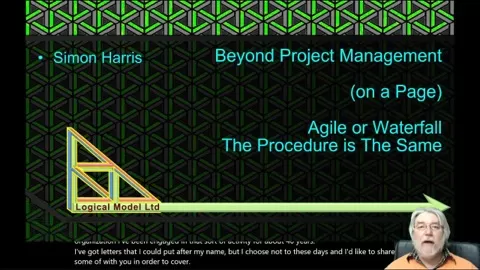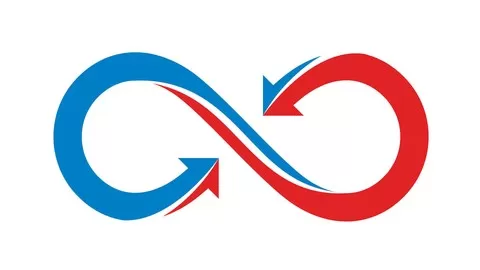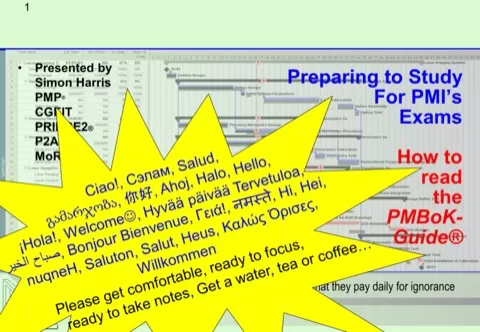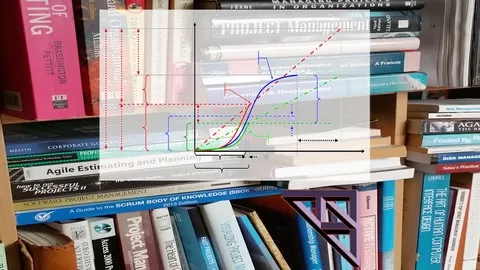1 ‘Framing’ No-One ever did a project for its own sake
CtO stands for Change the Organisation.
- We do it in anticipation of future Benefits in excess of the cost of investment.
- Benefit minus Cost= value.
- Benefits (outcomes) result from project’s OUTPUTS in use. Use requires operational behaviour change.
- Outputs may be created with either ‘design first’ or ‘iterative approaches’.
- Every project benefits from wise selection and mixing of Agile and Predictive approaches
- Every organisation requires understanding of the path to benefits beyond just projects
2 The 7 Steps of A Change – From Concept to Benefits in Steady State
I am starting from the a scenario of a ‘simple’ project where business need is clear and stable and team skills are equal to the required outputs. In a later course we can explore the consequences of a messy VUCA reality (Volatile, Uncertain, Complex (emergent) and Ambiguous
3 The ‘Light-Bulb’ moment – Vision of an End-Point
This video/lecture describes the very beginnings of the CtO (Change the Organisation) journey.
The part that is from nothing to initial recognition that we MAY want to commit to an investment. To judge “Is it worth while?” requires some investigation. Investigation requires sharing a vision of the end point with a stakeholder community
In a later class there is much to discuss about HOW to achieve a clear vision (including in a VUCA* world), even what vision is!
In Lecture #6 of this class I will expand a little on the description in this video of what has to happen so as to make this step’s results clearer and more tangible.
VUCA =
- Volatile – What we thought yesterday would be correct tomorrow appears today to be incorrect
- Uncertain – There are factors we are unaware of that will emerge to have consequences
- Complex – There are interactions between factors whose consequences cannot be anticipated in advance
- Ambiguous – While we can see factors around us we cannot draw reliable conclusions from them
The opposite is SCSC or SC2
- Stable – Factors affecting our actions won’t change
- Certain – And we know correctly what actions are required
- Simple – because we can accurately and precisely predict what the factors are and how they will interact
- Clear – We know the full list of factors
-
4 When Vision is Known We Are In A Project: 1st Define Scope & Acceptance Criteria
This video takes us end-to-end through the considerations for running a project and then simplifies and summarises.
Agile (iterative and Incremental) approaches and Design-First BOTH use the technique of decomposition to convert the Epics and Themes and future-oriented Concept of Operations and Target Operating Model into lists of potential deliverables whose specifications can be met by development team activity.
The results of decomposition are a called either a Backlog or a Breakdown structure.
In both cases the list is “what we could deliver from the project”. Agile’s commitment is to do the most valuable first and until time and money are consumed. A design first approach means we are committed to a scope whose cost will be consequential; more in a future class.
Both focus strongly on ‘projects deliver outputs…’ both focus strongly on ‘…that meet their quality targets’
5 Governance Decision Points For Benefits Realisation: 7 Step’s Concrete Results
Videos to here have described what each step does. This video focuses on the results of those steps in the terms required to enable Governance Decision Points (Often called ‘Review Gates’). Gates are the mechanism by which commitment of resources is allocated. Gate-reviews allow the CtO activity to be authorised and controlled from Board-Room to Boiler-room and from idea to steady-state-benefits-in-flow ACROSS the whole organisational portfolio.
Here I introduce the reality that “Business plans right to left and engineers plan left to right* and project management resolves the apparent contradiction” (*and believe they have the only correct view)
6 Governance Part2: Project Control in Velocity or Earned Value Terms
CtO steps 3-4-5-6 are a cycle that starts at the Sanction-Gate and ends with Acceptance of Deliverables-Gate. In agile terms this may be called a release (or maybe aligns to a sprint or even CI/CD*) and in predictive methods may be a stage or phase or year or quarter. (CI/CD = Continuous Integration / Delivery)
Steps 2-7 are a project – Output focus. Steps from Qualification to Earned Benefits in flow are the business interest in CtO – Change the Organisation and revert to operational Run the Organisation day to day
7 Governance Part 3: Simplifying the Model to just the 3 Essentials
Three Essentials are 1) Define the end point, 2) Allow the development team the controlled freedoms to deliver outputs 3) Bring outcomes into existence with benefits flowing. ‘2)’ is the project’s span.
This is the end of the high-level description of the whole CtO journey from a business’ perspective.
The next chapter of this course is to re-describe the journey with emphasis on “how does what we have covered match ‘well known’ project management methods and frameworks like PRINCE2, Agile and PMBoK-Guide?”
How the project components of the ‘enabling-benefits-through-change’ are described by ‘well-known’ project control frameworks using the vocabulary of PRINCE2, Agile and PMBoK-Guide First Steps to ‘Formalising’ Project Planning & Control According to Methods
Now its time to re-explain the story of Idea to Benefit in terms of the ‘mechanics’ or project. Its time to express them as the practices of planning, execution and control within ‘well-known’ frameworks and methods.
Planning is a social activity done many times whose aim is to create shared understanding between team members about what we COULD and what we’ve chosen to do until evidence shows better choices are available
From Vision to Mandate or Idea to Backlog & Breakdown – A start to project planning for artefacts
When the investment’s sponsor can describe a Vision or Goal with Benefit exit and entry tests and the business leadership community can describe the operating (RtO) tipping points then we have a description of ‘How To Get To Benefits’ that is sufficient for product or output based planning to begin – Project but not all of CtO.
CtO for benefits demands a project (or ‘workstream’) whose whole focus is behaviour changes that create a new set of procedures in RtO. Any isolated construction of artefacts (products) divorced from behaviour change is cost without prospect of benefit. Non of project, Agile or Waterfall is the fix for poor abilities in benefits realisation.(T)
Activity Planning Is Identical in Both Predictive and Iterative-Incremental
Agile planning maintains a list of what we could create (the product backlog) . Before the start of each 10 to 20 day sprint the most valuable subset of ‘ready (groomed to be INVEST-able)’ items is selected.
Sprint by sprint the product owner (and team) select items or features to be created and perhaps also delivered and identify the team’s activity required to complete those items to a potentially deliverable state. Both agile and predictive approaches suffer the same weakness; their strength is 100% in creation while strength in use has to be ‘all or half’ the capability for CtO benefits.(t)
Those 10-20 day sprints take items from the product backlog and the team determine all the tasks or actions or activities required to Design & Build & Unit test & Integrate & System test them. The list of features, results and actions is the Sprint backlog. In a later class we’ll examine the structure of a sprint.
When using a ‘design-up-front’ approach we do exactly the same except for how work is oriented. The incremental and iterative approach (using sprints) took a deliverable feature and identified the work to design, build and test it. The risk from this approach is what we don’t know about other features may have affected our choices if we had know. The design first takes all the features together through Specify then together through Design then through Build & Test then Integrate & System test. The risk of this approach is we may run out of time and or money before anything is delivered – Complete failure. A reason agile is popular is it replaces the complete failure risk with exposure to at worst only partial success.(t)
Execution, Monitoring and Control
Once a sprint, stage or phase is planned it can be executed.
Execution is most importantly about meeting quality targets. Control (governance) requires that achieving quality is visible – another topic for a later class. Quality Control (QC) marks the progress made. Monitoring of results compares achievement to intention. Where their is positive or negative variance adjustments are (should be) made to intention or to actions or both. If adjustments exceed authorities then escalations justified by predictions from empirical results are (should!) be relocated up or down (up for strategic and benefit oriented decisions and down for technical options)
And Again
Here is the final mapping of the project management elements into the vocabulary from all three of the Guide to the Project Management Body of Knowledge and PRINCE2 and agile terms. By using p2, agile and PMBoK-G content I can only highlight how weak the ties to techniques and activities needed for benefit and CtO are. In a later class I’ll fill the gaps.
This last representation maintains use of the colour scheme of CtO for Benefits and adds the benefits flow from nascent to growing and stabilising.
To run a project in agile terms uses planning at the start of every sprint, start of every release and perhaps also the very start of the whole need (Sometimes called “Sprint Zero” if its going to be used). The PMBoK-G agrees. It has two term: ‘Continuous elaboration’ and ‘Rolling-Wave Planning’. P2’s vocabulary is to talk of an Project Plan which is the whole of the project’s intended deliveries – so at high level and compatible with an agile ‘Release-plan’, the stage plan which is the next chunk of authorisation at the ‘detailed allocation of resources level’ and team plans which align to each team’s current intended actives. Comparing Team plan and Sprint Backlog would be wholly ‘ok’.
Finally my Who Am I
The last hour’s content has been “How p2, PMBoK-G and agile help us deliver the subset of CtO that is create outputs”. Its a necessary but inadequate element on it own for CtO. CtO reforms the organisation in a way that can realise benefits. To lead that scope of initiative takes more than online learning can deliver. To gain those skills requires mentoring and coaching (mentor a person, coach a topic). If you would like to participate in that learning then you need to reach out to have a discussion – detail in my profile






